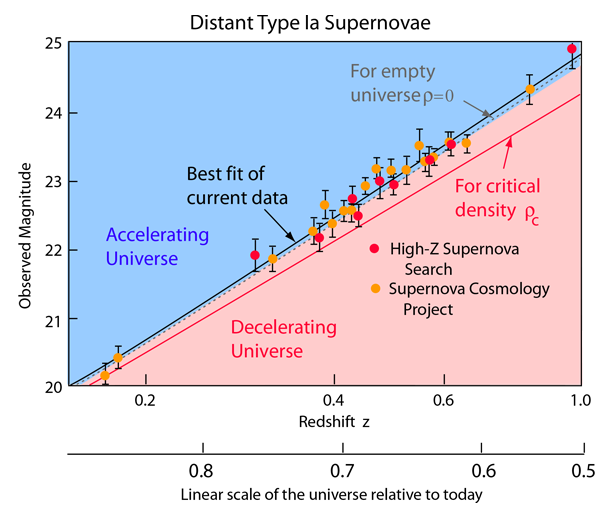Evidence for an accelerating universe
One of the observational foundations for the big bang model of cosmology was the observed expansion of the universe. Measurement of the expansion rate is a critical part of the study, and it has been found that the expansion rate is very nearly "flat". That is, the universe is very close to the critical density, above which it would slow down and collapse inward toward a future "big crunch". One of the great challenges of astronomy and astrophysics is distance measurement over the vast distances of the universe. Since the 1990s it has become apparent that type Ia supernovae offer a unique opportunity for the consistent measurement of distance out to perhaps 1000 Mpc. Measurement at these great distances provided the first data to suggest that the expansion rate of the universe is actually accelerating. That acceleration implies an energy density that acts in opposition to gravity which would cause the expansion to accelerate. This is an energy density which we have not directly detected observationally and it has been given the name "dark energy".
The type Ia supernova evidence for an accelerated universe has been discussed by Perlmutter and the diagrams below follows his illustration in Physics Today.

The data summarized in the illustration above involve the measurement of the redshifts of the distant supernovae. The observed magnitudes are plotted against the redshift parameter z. Note that there are a number of Type 1a supernovae around z=.6, which with a Hubble constant of 71 km/s/mpc is a distance of about 5 billion light years.
| The density parameter Ω |
Reference
Carroll & Ostlie
Ch 29
Conselice
Perlmutter
| HyperPhysics***** Astrophysics | R Nave |